
Introducing your dog to the office
Obviously, the biggest worry about having a pet in the office is that they will distract everyone from working, chew through cables, pee all over the floor and cause absolute chaos causing your business to implode from the inside out. Well, that might be slightly dramatic, but I suppose my point is, it doesn’t have to be the catastrophe you might be imagining. In terms of what we have experienced with our beloved pooches at Headspace, we can honestly tell you it doesn’t have to be pandemonium. Responsible ownership, training your dog well, and introducing them to the office environment in stages or whilst they are young, will make for the best transition into the workplace. We have 6 ‘tips’ based on the experiences of our Headspace Hound owners, that we hope will help you if you are considering bringing your dog to the office.
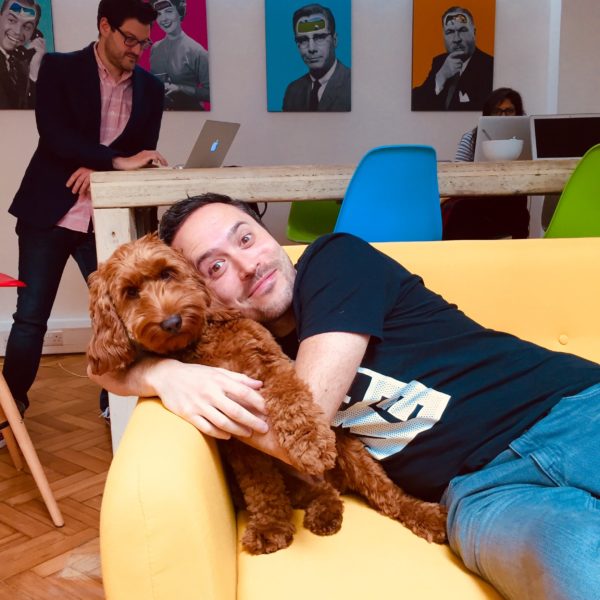
1. Gauging Your Audience:
Even before bringing your dog to the office, you’ll know step one is to speak with your managers. But even with the seal of approval from the big boss, we urge you not to forget to speak with your colleagues. It’s hard to imagine, but not everyone likes dogs (I know!), but by being upfront with the people you work with and understanding their reservations, allergies or fears of dogs, will help you to determine:
A) If bringing your dog to work is the right choice
B) How to manage your dog appropriately when they do come into the
office
C) How often you should bring your dog to the office.
Remember, no office culture, dog, or company is the same, so everyone will have different obstacles to navigate, but it’s important to address all of these and how you’d manage them, BEFORE bringing your dog into your work environment.
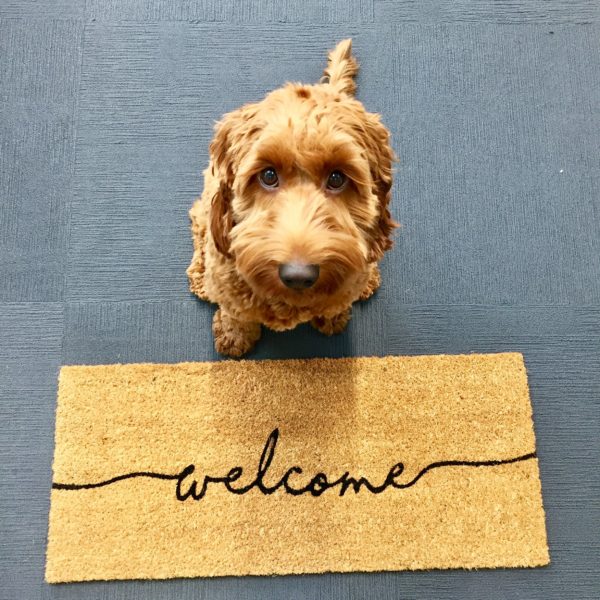
2. Introducing your pup to the new pack:
First impressions are everything. This isn’t meant to be, ‘bring your dog to work day’, but a longer-term lifestyle change. It is important to make a positive ‘team’ meets ‘dog’ introduction when they first come into the office. With some treats to hand, we suggest casually demonstrating some simple commands such as “sit”, “stay”, ‘no”, so you can discreetly show the team the ‘keywords’ which your dog will respond to. This will help them feel more confident, regardless if they have a huge experience with dogs or not. But, also feel free to throw a few ‘show off’ tricks in there too, such as “Twist”, “Play Dead”, “Dance”, just to please the crowd and make your dog feel like a superstar in front of their new friends.
Do also allow your dog, with the permission of your colleagues, to greet individuals and enjoy a little love before setting the standard and getting on with work.
Introducing your dog to people in the right way, will also help alleviate fears on both sides. Some people aren’t used to dogs, so it’s important to make them feel comfortable.
Kit Wei from Climb Online says, “We had one colleague who was initially a bit scared of dogs, but was still happy for me to bring Kira to the office, so long as he was well behaved. Once she met Kira a few times, they actually got on really well and still do”

3) Opening up communication channels with co-workers:
Properly introducing your dog to co-workers will also make your dog feel at ease. Nolah (My Pet Cockapoo), being the ‘Headspace Dog’ meets hundreds of members a day. She recognises them all and is happy to be greeted by them. In fact, she looks pretty sad when she’s not! But we did once have a situation where Nolah clearly felt threatened by seeing a new face in the office across from us. Rather than as an owner being worried or embarrassed about this situation, as your initial thoughts are obviously ‘oh gosh my dog doesn’t like someone’ and ‘please don’t bark’, actually, being able to confront the situation is so straightforward and really helps open up clear communication with the people you work with and around.
I took it as a good opportunity to introduce myself to the new starter (dogs make the best networking companions) and explained that if they were okay with it, I’d like to introduce my dog to her, as we would all be working so closely together. The new starter was more than happy to take 5 minutes out over lunch, to say hi to Nolah, sit down at her level, and feed her some of her favorite treats. This was not only a fun experience but succeeded in making Nolah feel super confident about this new person. After this, Nolah resumed usual sleeping duty feeling at ease and I’d got to meet a new person. Win win!
You can also set up play dates with other dog owners. Kibby (Cockapoo, Innovid) and Nolah also play well together when invited to, we arrange playdates and meet at the appropriate times. This is such a good way of meeting other dog owners in your building/office and tiring your pooch out for the remainder of the afternoon.
Being able to articulate issues with co-workers, opens up a productive communication channel which invites them to speak with you if they have any questions or concerns about other things too. Being vocal about your dog behavioral tactics can also act as a teaching tool, so people in the office can learn more about dogs and their behavior, and feel confident around them.
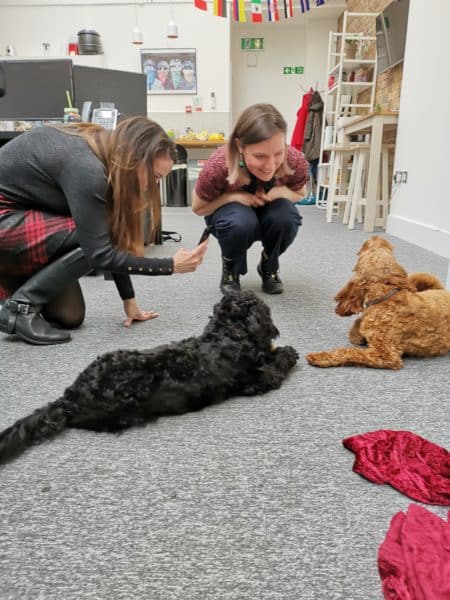
4) Every dog needs a”den”:
Bring in toys and a comfortable bed for them to really feel at home. You can place this in the office near your desk or a place where you think they feel more secure e.g. the corner of the room, a nook under an empty table. You’ll find that most of the time they will just lounge out there to eat, drink and sleep. But our Headspace dogs have been known to venture a little further in search of the best people-watching and sleeping spots.
Nolah will sit directly under the desk, it’s nice and dark and cool there, plus she has the added benefit of knowing if you decide to go walkies. Or in Tiger’s case, (Bulldog Beagal Cross, Product Madness) he prefers to play the big boss and occupy the boardroom! Apparently, he never misses a Monday morning meeting. Kira (King Charles Cavalier Spaniel, Climb Online), on the other hand, is just small enough to fit on her owner’s lap, and can often be found supervising his work at the desk.
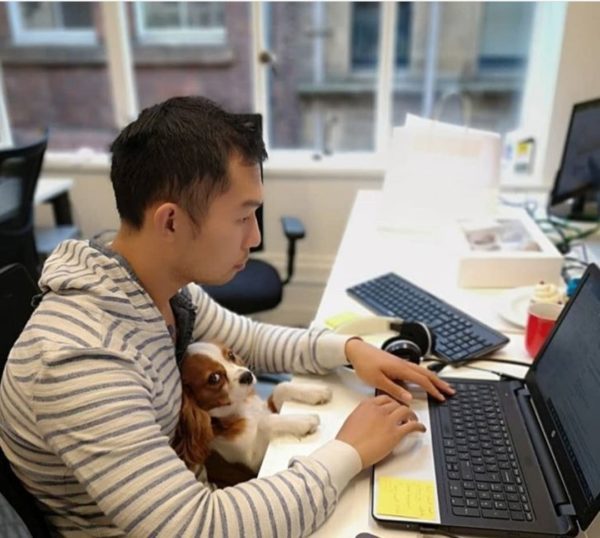
5) Getting into the right routine:
Dogs are creatures of habit, in fact, they thrive in an environment which promotes a regular routine which ultimately promotes good behavior.
‘Walkies’ are everything. Make sure your dog has had a good walk in the morning and at lunch, appropriate for their size and energy levels. Top that off with the train, tram or bus ride in the AM, where they will be greeted by at least 10 different passers-by and you’ll find that you have a very tired pooch by the time work even begins.
For most dogs, when they see that you and the team are working and they don’t get attention, they just settle down. But you can go a step further, like Kira’s owner, and actually, teach the command ‘settle’, so your dog knows when it’s time to chill and time for play.
You’ll need to take your dog out of the office for a quick ‘pee break’ around every 2 hours. This will mitigate any accidents happening in the office, but also allow you and your dog to stretch your legs for 5 minutes and rest your mind. It’s not often people get the chance to really take a break from their desk. So this can be such a good opportunity to boost your own productivity levels.
Kit Wei from Climb Online says that he likes to have a break every 1.5 hours to walk or play with Kira, ‘he will then just sleep in between times. I find it healthy for my own working habit, because I end up concentrating more knowing that I’ll be having regular breaks and fresh air”
I do something similar with Nolah. After a couple of months with Nolah in the office, I started working using the Pomodoro Technique. This means I have 5 minutes every half hour to do my own thing e.g. make a tea, but it ensures that every 2 hours I get a 15-minute break to take Nolah outside. I, like Kit, find taking regular breaks really helps me focus on the task at hand and I get much more done. In the summer months, we also make sure we take a good 45-minute lunch break to explore a nearby park. These habits are super motivating for me, but also ensure I have a very happy, relaxed hound.
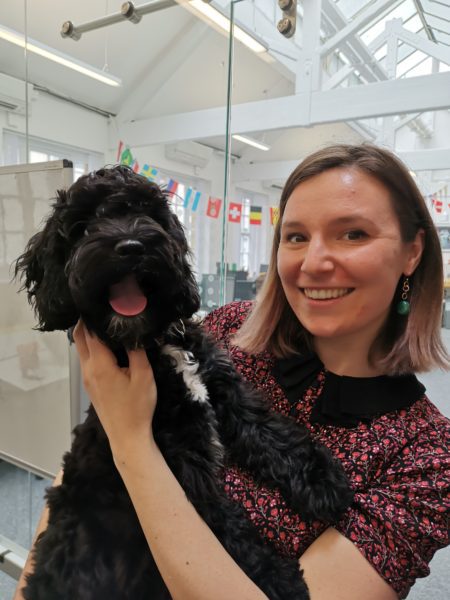
6) Having treats at hand
Don’t forget to reward your dog for their good behavior. It will help to reinforce how you like them to behave in the workplace. Every Headspace dog owner has treats on hand. In fact, I’ve even known a few strangers to have them in their pockets, eager to give them to Nolah. So many dog lovers out there.
The training techniques you employ are so important and mean that your dog can differentiate the behavior they are meant to display in different situations or environments. For example, Nolah is a ball of energy at home and on our work breaks, but in the office, she’s playful if invited to be, but she knows not to bark. Whereas at home she lets loose and enjoys a playful growl and bark.
You may opt for the ‘clicker’ approach for rewarding your dog, to save your dog putting on the extra pounds. But whatever your method is, stay consistent, and let your colleagues know.
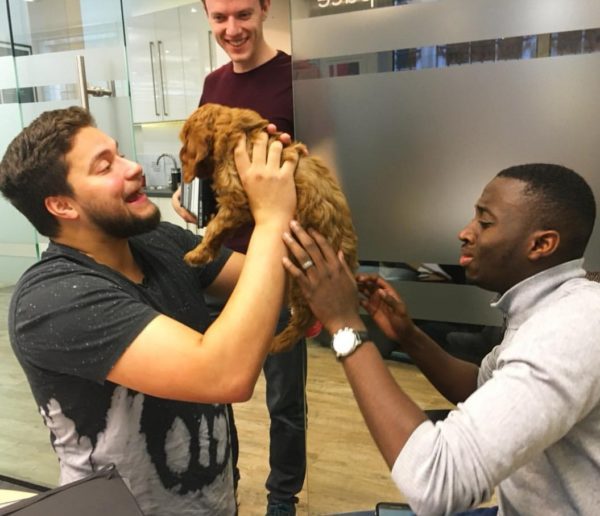
Ultimately bringing your dog to the office needs to be the right decision for you, your dog and your co-workers. We hope that if bringing your dog into work is something you are considering, our tips will help you make a success of it.


